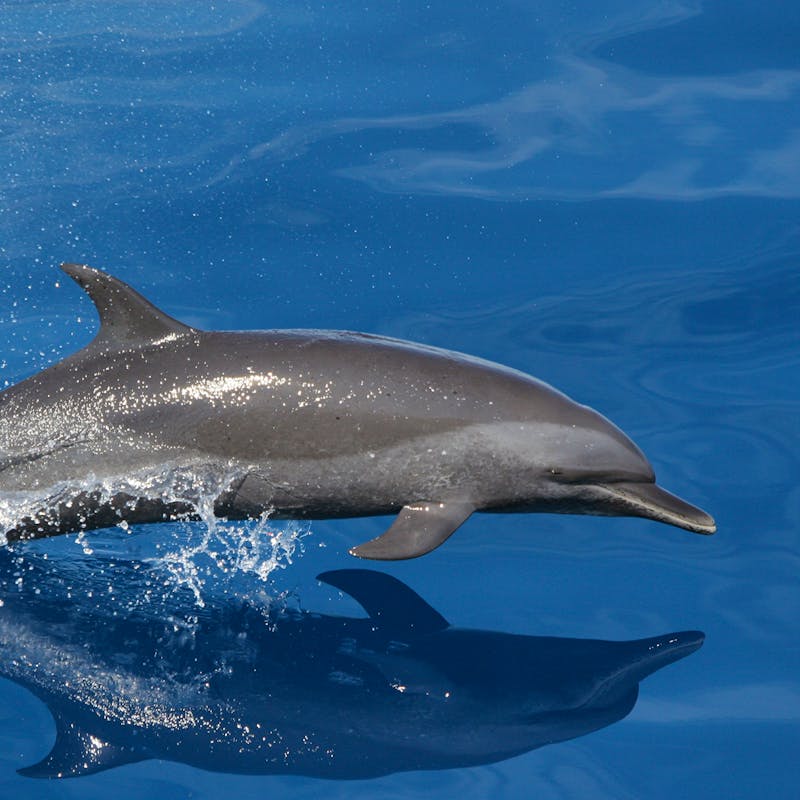Unlike humans, wildlife doesn’t recognize political boundaries. Whether it crawls, slinks, flies or slithers, native wildlife doesn’t know or care what country it’s in. Yet countless species that live outside our own borders can be impacted by our actions. That’s why our international team works with governments and international conventions and commissions to protect wildlife wherever it lives or migrates, especially here in the Americas.
For many years, we have especially focused on Latin America, a region with a dazzling array of biodiversity. Ranging from Mexico to Argentina, Latin America holds so many stunning and unique landscapes, from mountain peaks to ocean floor, that it holds the widest variety of plants and animals in the world. So as we celebrate the third annual World Wildlife Day, join us in shining a spotlight on some incredible species to the south.
The Amazon Rainforest
The world’s largest tropical rainforest, the Amazon covers almost 3 million square miles spreading over eight countries (over 40% of the entire South American continent!). This rainforest alone is home to approximately 1,300 species of birds, 3,000 species of fish and 430 species of other animals. But, one of the animals that makes its home in the Amazon might surprise you – the freshwater ray! When we think of stingrays, we often imagine the oceanic variety. But some live in freshwater, like those found in the Amazon River basin in South America. These freshwater stingrays are oval shaped, can grow to be three feet long, and have distinctive yellow-orange spots on their upper surface. Several factors have recently pushed some populations of freshwater rays to be classified as endangered, including being caught for the international pet trade.
(story continues below)

The Galapagos Islands
These islands have some of the highest numbers of endemic species anywhere in the world. In fact, 97% of the reptiles and land mammals found in the Galapagos Islands can’t be found anywhere else in the world! They are also home to the famous giant Galapagos tortoise, which can live to be more than 100 years old, grow to over five feet long, and weigh over 500 pounds. This giant tortoise is classified as vulnerable not only because it is so rare, but because it is also being increasingly threatened by non-native species that have been introduced to the islands, including dogs and cats.
(story continues below)

The Great Mesoamerican Reef
This is the largest coral reef in the Atlantic Ocean at over 600 miles long, stretching through four different countries. It has one of the widest arrays of coral species in the Atlantic, with at least 65 different kinds of coral identified. It is also home to more than 500 species of fish, including the whale shark! The reef includes extensive areas of sea grass, making it the perfect place for green sea turtles (and other sea turtle species) to hang out.
(story continues below)

The Andes
The Andes Mountains stretch from Venezuela all the way down to Argentina covering over 4,500 miles. The climate throughout the Andes varies from warm, wet cloud forests in the north, to dry areas in the south. Among other animals, the mountains are home to the spectacled bear (South America’s only native species of bear), llamas, and the Andean condor. Up in the mountains of the Andes lies Lake Titicaca, the highest navigable lake in the world and home to a great big frog. The Lake Titicaca frog can weigh over two pounds, and is found only in Lake Titicaca, which spans into both Peru and Bolivia. It is the only truly aquatic frog in the world, and can actually breathe underwater. While not the most handsome creature, it certainly is distinctive. You can recognize the Lake Titicaca frog from its loose-hanging skin, which creates large folds around the neck and legs. Unfortunately, this critically endangered frog is overharvested for human consumption and sold locally in the area around the lake.
(story continues below)
Another species that can be found only in this landscape is the Andean hairy armadillo. There are 20 species of armadillos in Latin America, but this one is perhaps the most unique, and the most imperiled. This armadillo is – you guessed it – hairy! It is the only species of armadillo to grow hair between the chinks of its armored shell. It can grow up to two feet long and can be found in Bolivia, Chile, Peru and Argentina. Sadly, this armadillo is hunted commercially for its shell, which is used to make traditional musical instruments called charangos (small guitars). Thousands of these armadillos are captured each year, even though they are internationally recognized as vulnerable and protected under international law.
All of these ecosystems are inhabited by different amazing plants and animals. From wings to claws to paws and everything in between, Latin America has it all and more. With such complex and diverse ecosystems, each animal plays a special role that is vitally important to the survival of the whole region. Through our work, we hope not only to protect animals like these using international, regional and national laws, but also to empower Latin American nations to better protect their native wildlife and the habitats they rely on.




